Grottoes along the Silk Road
Post Time:2019-12-26 Views:
The ancient Silk Road was a key link between China and the West. Along with it, not only goods but also ideas were exchanged between the two great civilizations of Rome and China. However, it seems to be in the nature of human beings to move from one place to another, to trade with their neighbours for goods, skills, ideas and culture. Grottoes are the best examples.
There are many grottoes along the silk road, here I would like to recommend the some popular ones that will feast your eyes.
Longmen Grottoes:
Listed as a UNESCO World Heritage Site, the Longmen Grottoes represent the high point of Chinese stone carving and will blow your mind. It is home to more than 2,300 caves and niches that were delicately carved into the limestone cliffs of over one kilometre long.
There are around 110,000 Buddhist stone statues and more than 2,800 inscriptions carved on the stones, as well as plenty of historical materials regarding religion, art, calligraphy, architecture and more.
More information about Longmen Grottoes: Longmen Grottoes A Symbol of Ancient Culture.
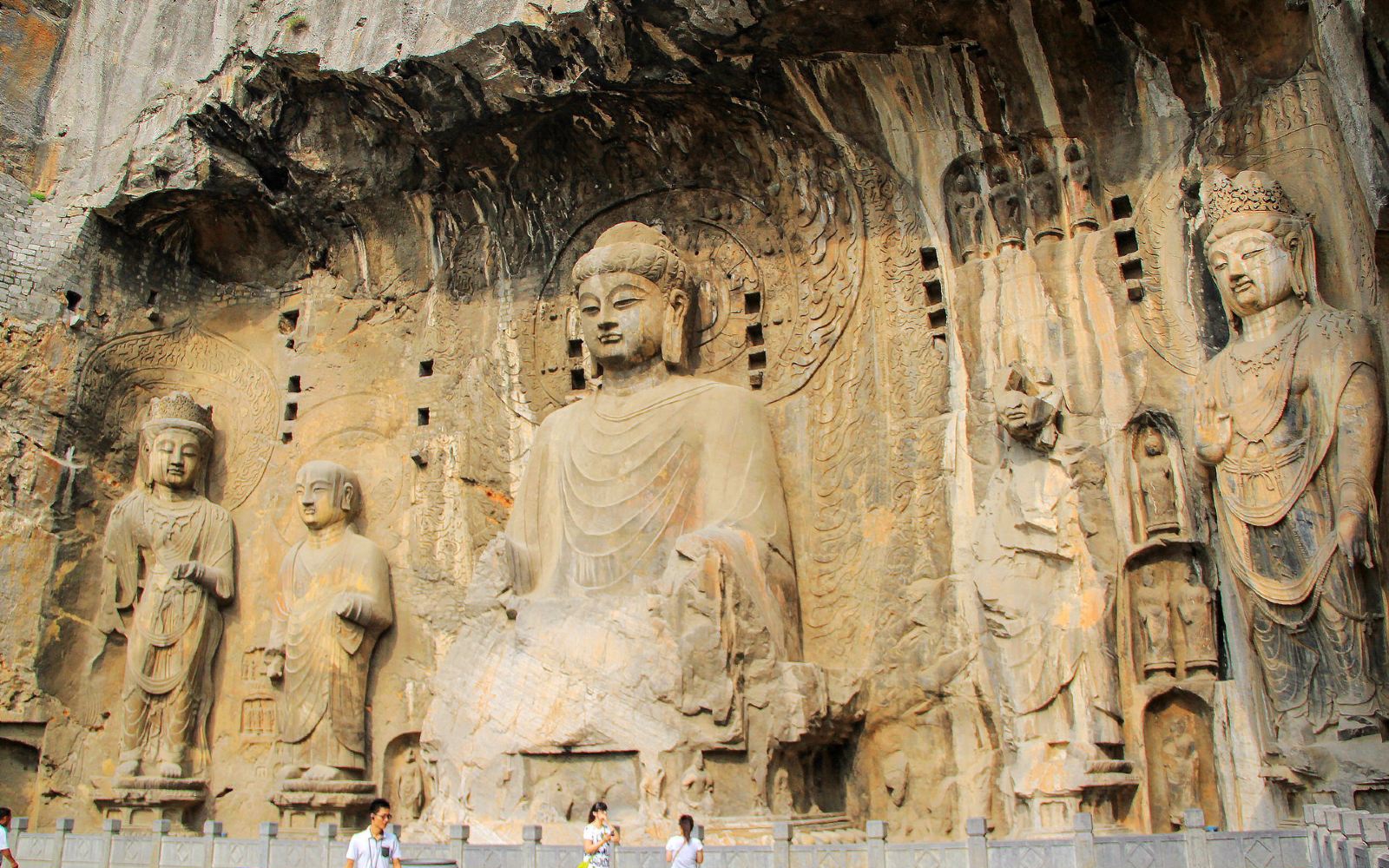
Tips:
Spring and Autumn are the best seasons to visit the Longmen Grottoes and Luoyang. Among them, Summer will be very hot and winter bitingly cold. Meanwhile, The Annual Luoyang Peony Festival from 10 to 25 April, is the best time to see the blooming peonies. There may be some interesting activities during the festival.
Yungang Grottoes
From thumb-sized figurines to a 56-foot colossus, the Buddhist carvings at Yungang are one of the most spectacular holy sites in China.
Yungang Grottoes, located in north China's Shanxi Province, is one of the renowned Buddhist temple grottoes across the country, along with Mogao Grottoes, Longmen Grottoes, and Maijishan Grottoes.
Housing 45 major caves, 1,100 niches and more than 53,000 statues, it is the largest area of ancient grottoes in the world. The site was enlisted as a World Heritage Site by the United Nations Educational, Scientific and Cultural Organization (UNESCO) in 2001.
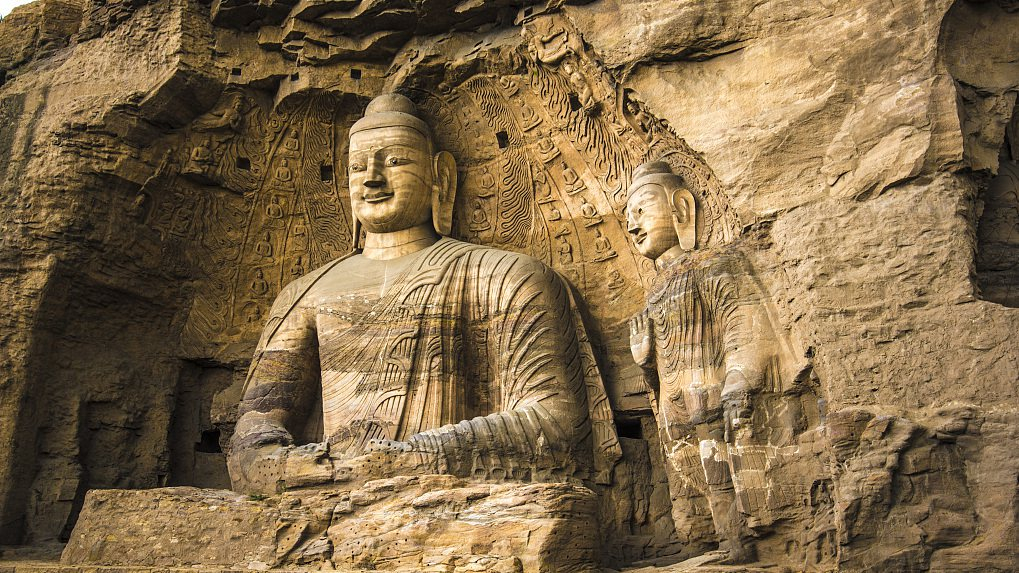
Tips:
This area is located on the Loess Plateau, more than 3,600 feet above sea level. Often affected by the Siberian cold front, the annual temperature averages between 5 degree Celsius and 7degree Celsius. Summers are cool, but in winter the temperature in July and coldest in January can drop to around -13 degree Celsius. It's hottest in July and coldest in January.
Mogao Grottoes:
At one of the key crossroads lies Dunhuang, which boasts bountiful cultural relics that demonstrate the ancient trade and cultural communications along the Silk Road.
The Mogao Grottoes are commonly known as the Caves of a Thousand Buddhas. With a large number of murals, grottoes, cultural relics to name just a few, it is a world-famous Buddhist art resort. Here you can enjoy the magnificent grottoes and mural art, and learn the history of Buddhism in Dunhuang through explanation and film display, which is the best option for tourists to visit Dunhuang.
continue to visit you will find that the caves are filled with Buddha statues, flying Apsaras, Kabuki music, fairies, and so on. There are not only sitting statues up to nine stories but also small Bodhisattvas of more than ten centimetres, it is quite numerous and in different shapes, which is worth to visit.
By the way, if you are interested in Mogao Grottoes, read this post: An Impressive way to admire the Mogao Grottoes.
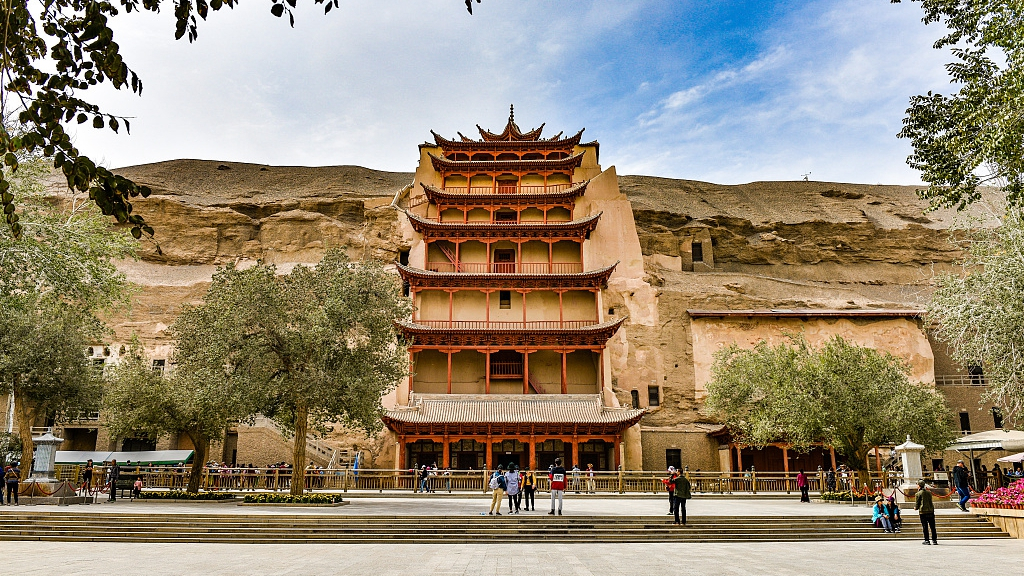
The Flying Apsaras
The apsaras in the Mogao Caves are the best example of such cultural fusion. Originating from Hindu Buddhist culture, apsaras are female spirits of the clouds and water, but in the Mogao Caves, the Hindu goddesses have developed a Chinese style, including both genders and connotations of Chinese mythology.
About Flying Apsaras: Explore the Flying Apsaras in Mogao Grottoes.
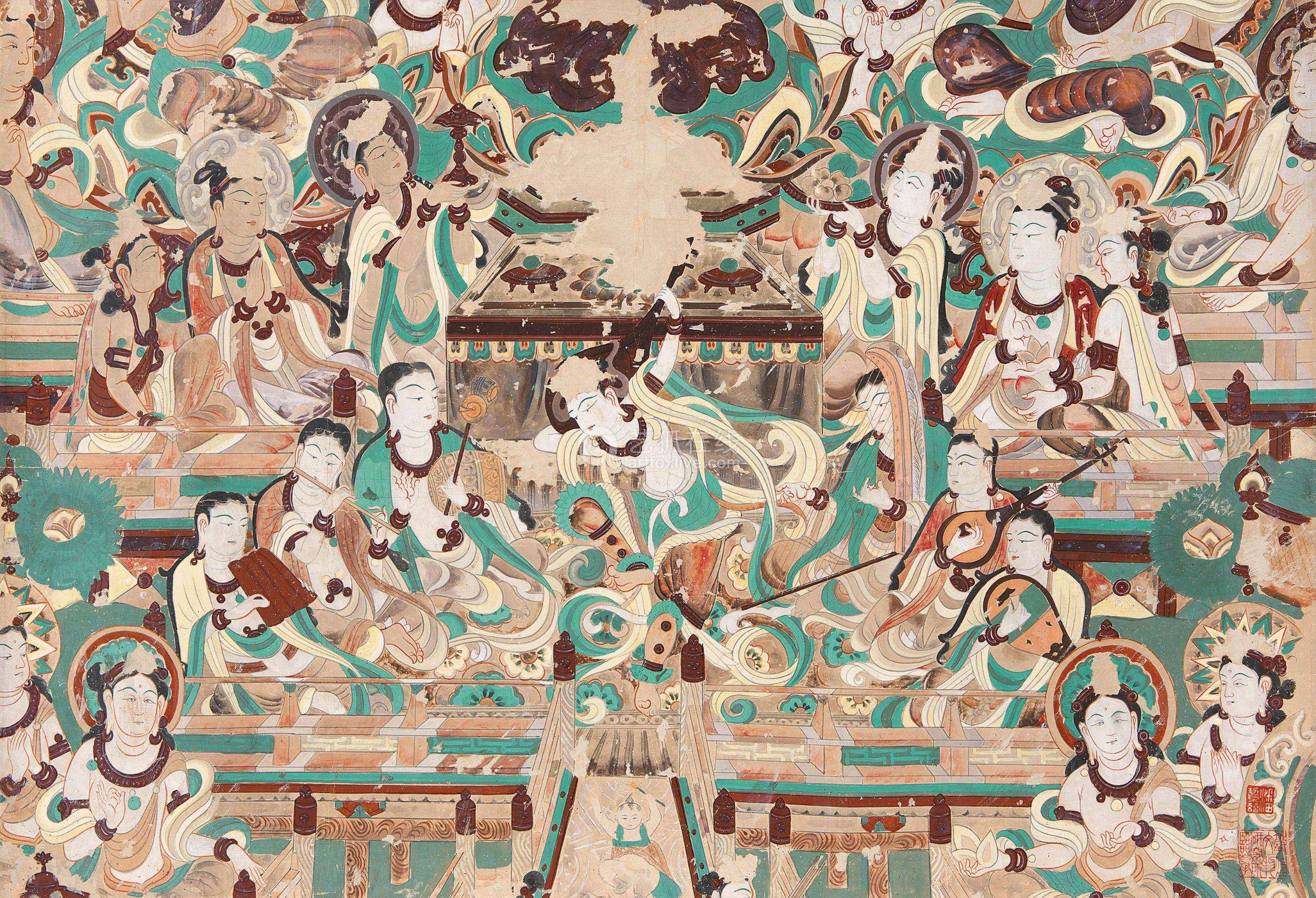
Tips:
The best time to travel to Dunhuang is from April to October. In Summer the sun is very strong so sunscreen products are essential.
In winter, the temperature of Dunhuang it's very cold so bring plenty of warm clothes.
The Kizil Thousand Buddha Caves:
The Kizil Grottoes are located on the northern bank of the Muzal river, in Baicheng County, Xinjiang Uygur Autonomous Region.
Known as one of the "Four Great Grottes" in China - a list including the Dunhuang Mogao Grottoes, the Yungang Grottoes, and the Longmen Grottoes, the Kizil Grottoes were registered as a UNESCO World Heritage Site in 2014.
In the late nineteenth and early twentieth centuries, archaeological expeditions to the historical Western Regions of China attracted many foreign explorers. These expeditions removed the different number of murals and painted status from Kizil Grottoes.
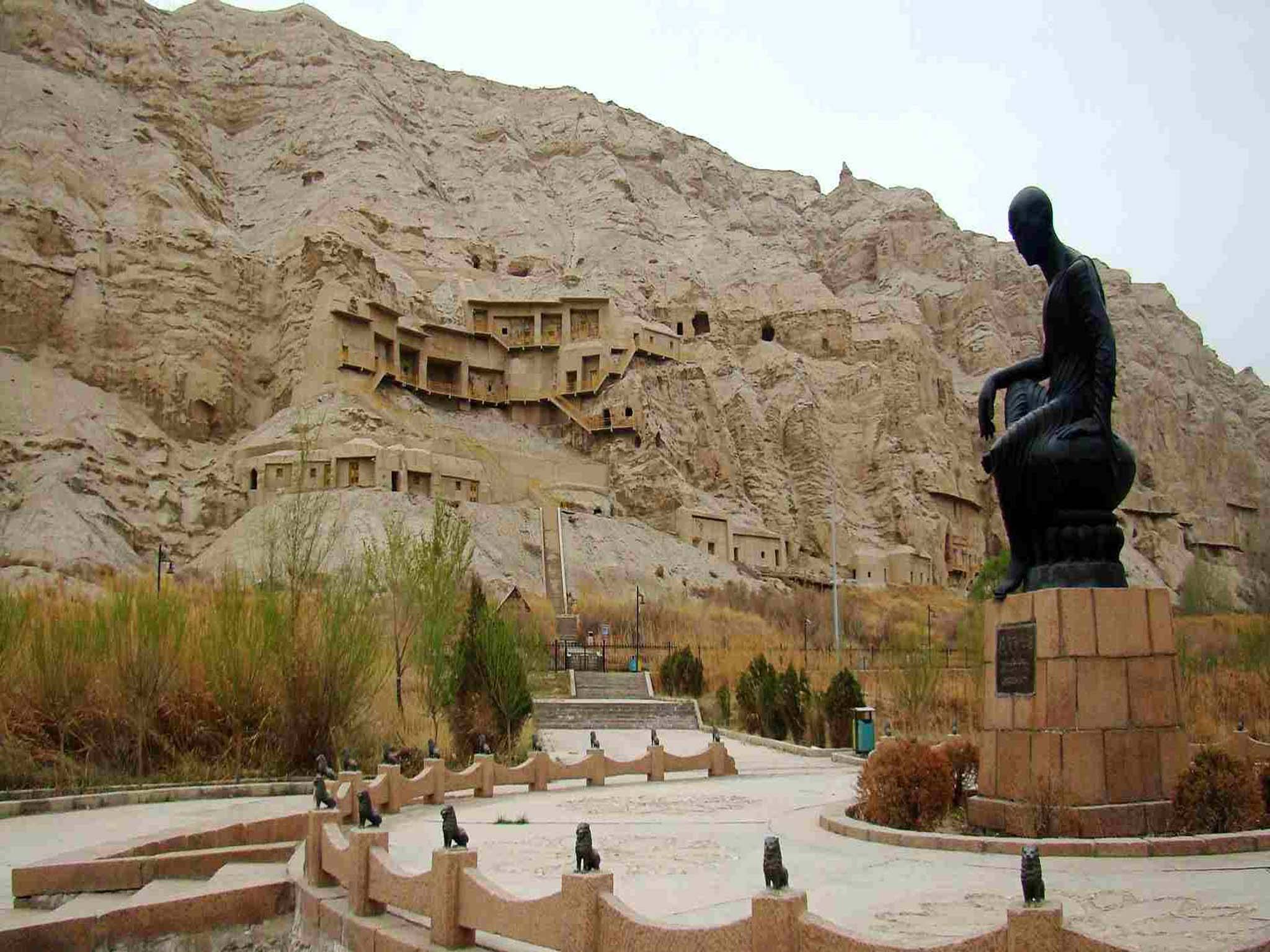
Recommended Silk Road Tours:
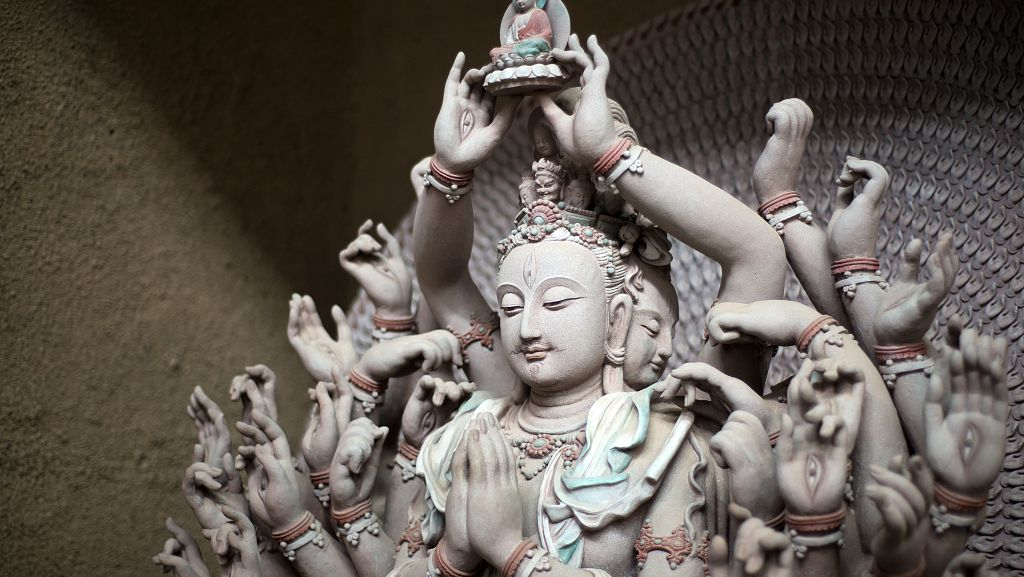 West China Travel to Qinghai and Gansu
West China Travel to Qinghai and Gansu  Silk Road Travel from Malaysia by Airasia
Silk Road Travel from Malaysia by Airasia
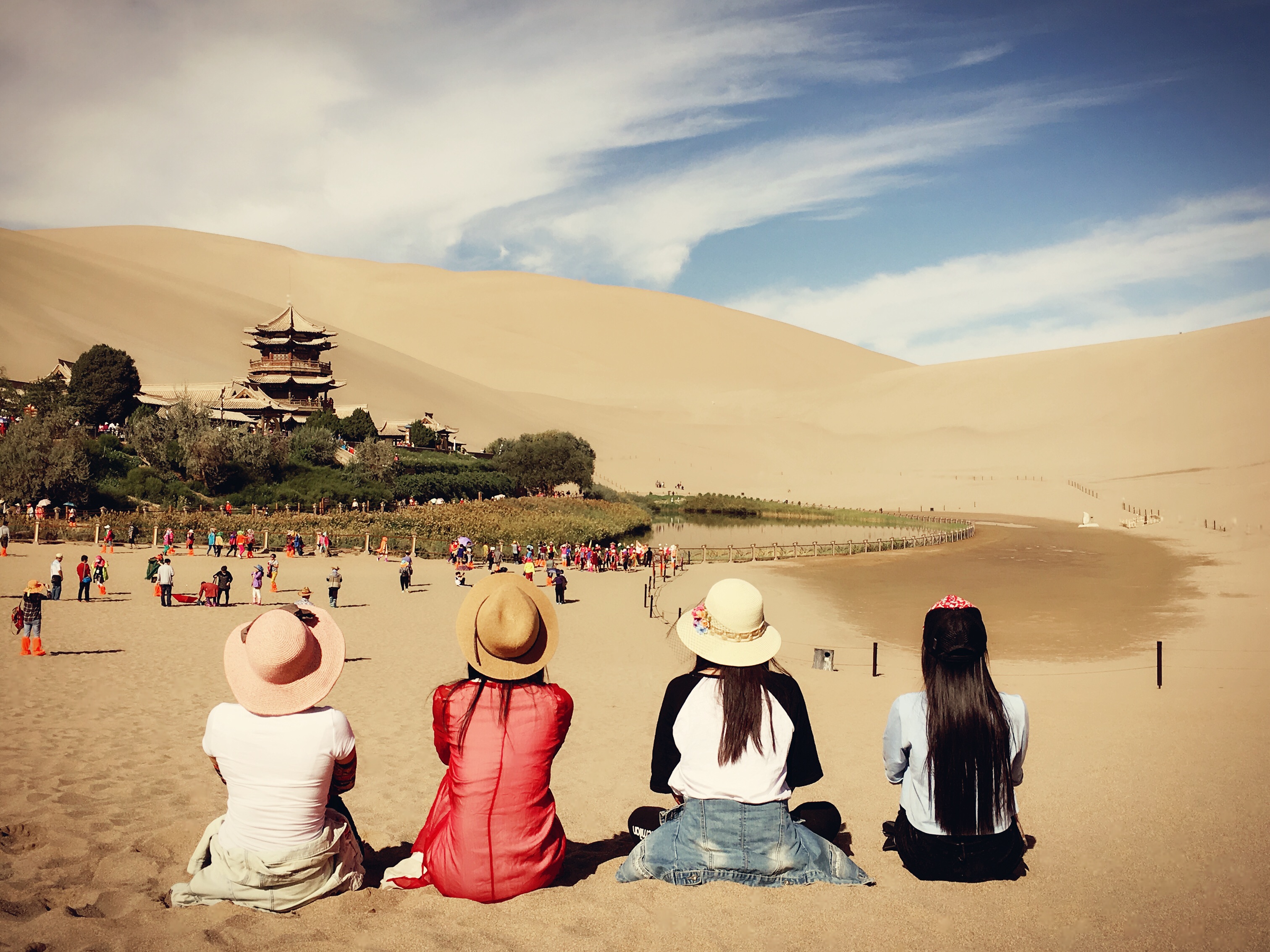 Zhangye-Jiayuguan Pass-Dunhuang Tour
Zhangye-Jiayuguan Pass-Dunhuang Tour 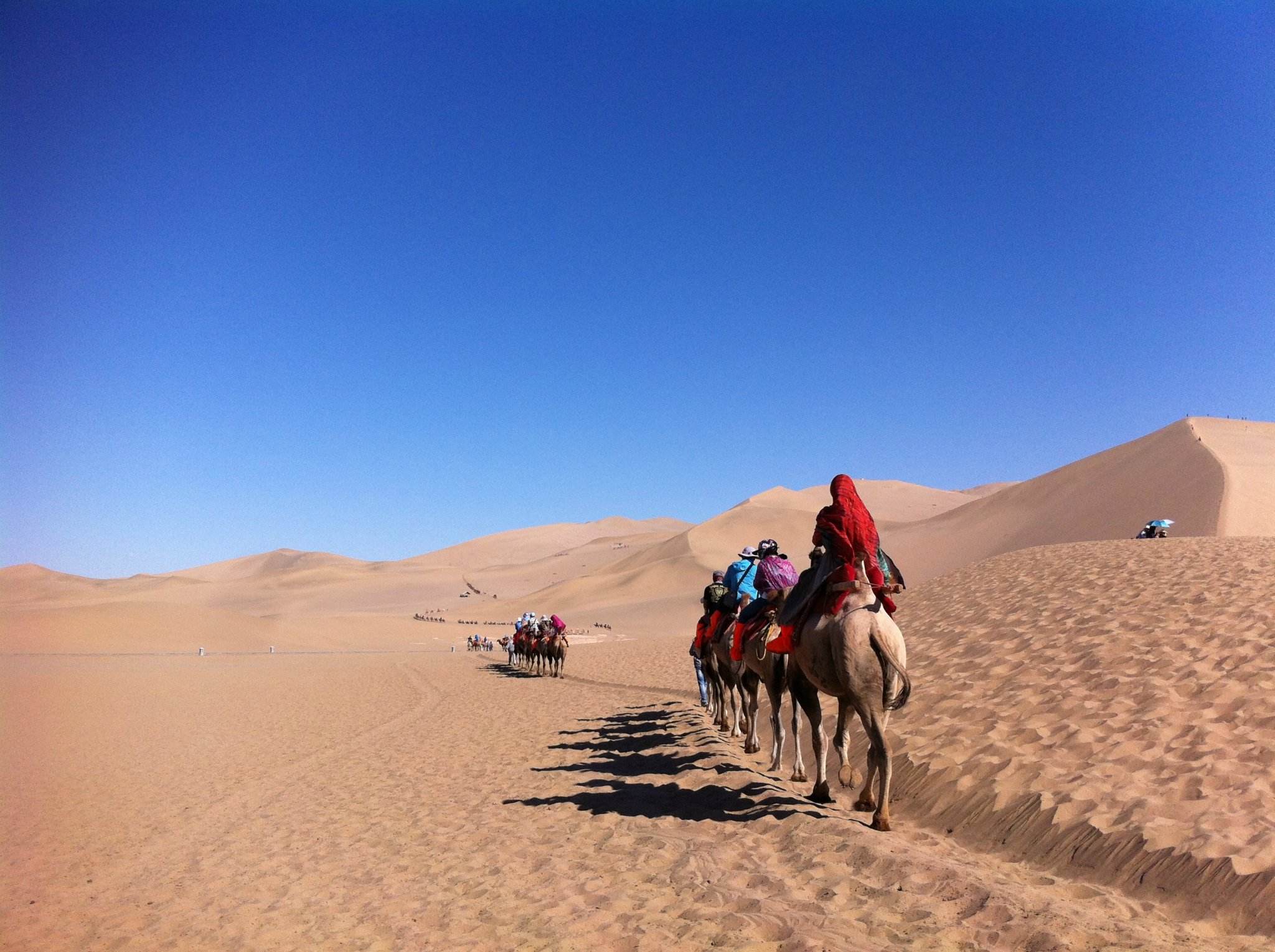 12 Days Silk Road Travel to Qinghai-Gansu and Xinjiang
12 Days Silk Road Travel to Qinghai-Gansu and Xinjiang
There are many grottoes along the silk road, here I would like to recommend the some popular ones that will feast your eyes.
Longmen Grottoes:
Listed as a UNESCO World Heritage Site, the Longmen Grottoes represent the high point of Chinese stone carving and will blow your mind. It is home to more than 2,300 caves and niches that were delicately carved into the limestone cliffs of over one kilometre long.
There are around 110,000 Buddhist stone statues and more than 2,800 inscriptions carved on the stones, as well as plenty of historical materials regarding religion, art, calligraphy, architecture and more.
More information about Longmen Grottoes: Longmen Grottoes A Symbol of Ancient Culture.

Tips:
Spring and Autumn are the best seasons to visit the Longmen Grottoes and Luoyang. Among them, Summer will be very hot and winter bitingly cold. Meanwhile, The Annual Luoyang Peony Festival from 10 to 25 April, is the best time to see the blooming peonies. There may be some interesting activities during the festival.
Yungang Grottoes
From thumb-sized figurines to a 56-foot colossus, the Buddhist carvings at Yungang are one of the most spectacular holy sites in China.
Yungang Grottoes, located in north China's Shanxi Province, is one of the renowned Buddhist temple grottoes across the country, along with Mogao Grottoes, Longmen Grottoes, and Maijishan Grottoes.
Housing 45 major caves, 1,100 niches and more than 53,000 statues, it is the largest area of ancient grottoes in the world. The site was enlisted as a World Heritage Site by the United Nations Educational, Scientific and Cultural Organization (UNESCO) in 2001.

Tips:
This area is located on the Loess Plateau, more than 3,600 feet above sea level. Often affected by the Siberian cold front, the annual temperature averages between 5 degree Celsius and 7degree Celsius. Summers are cool, but in winter the temperature in July and coldest in January can drop to around -13 degree Celsius. It's hottest in July and coldest in January.
Mogao Grottoes:
At one of the key crossroads lies Dunhuang, which boasts bountiful cultural relics that demonstrate the ancient trade and cultural communications along the Silk Road.
The Mogao Grottoes are commonly known as the Caves of a Thousand Buddhas. With a large number of murals, grottoes, cultural relics to name just a few, it is a world-famous Buddhist art resort. Here you can enjoy the magnificent grottoes and mural art, and learn the history of Buddhism in Dunhuang through explanation and film display, which is the best option for tourists to visit Dunhuang.
continue to visit you will find that the caves are filled with Buddha statues, flying Apsaras, Kabuki music, fairies, and so on. There are not only sitting statues up to nine stories but also small Bodhisattvas of more than ten centimetres, it is quite numerous and in different shapes, which is worth to visit.
By the way, if you are interested in Mogao Grottoes, read this post: An Impressive way to admire the Mogao Grottoes.

The Flying Apsaras
The apsaras in the Mogao Caves are the best example of such cultural fusion. Originating from Hindu Buddhist culture, apsaras are female spirits of the clouds and water, but in the Mogao Caves, the Hindu goddesses have developed a Chinese style, including both genders and connotations of Chinese mythology.
About Flying Apsaras: Explore the Flying Apsaras in Mogao Grottoes.

Tips:
The best time to travel to Dunhuang is from April to October. In Summer the sun is very strong so sunscreen products are essential.
In winter, the temperature of Dunhuang it's very cold so bring plenty of warm clothes.
The Kizil Thousand Buddha Caves:
The Kizil Grottoes are located on the northern bank of the Muzal river, in Baicheng County, Xinjiang Uygur Autonomous Region.
Known as one of the "Four Great Grottes" in China - a list including the Dunhuang Mogao Grottoes, the Yungang Grottoes, and the Longmen Grottoes, the Kizil Grottoes were registered as a UNESCO World Heritage Site in 2014.
In the late nineteenth and early twentieth centuries, archaeological expeditions to the historical Western Regions of China attracted many foreign explorers. These expeditions removed the different number of murals and painted status from Kizil Grottoes.

Recommended Silk Road Tours:
 West China Travel to Qinghai and Gansu
West China Travel to Qinghai and Gansu  Silk Road Travel from Malaysia by Airasia
Silk Road Travel from Malaysia by Airasia  Zhangye-Jiayuguan Pass-Dunhuang Tour
Zhangye-Jiayuguan Pass-Dunhuang Tour  12 Days Silk Road Travel to Qinghai-Gansu and Xinjiang
12 Days Silk Road Travel to Qinghai-Gansu and Xinjiang  Xinjiang China Travel is specialiesed in organizing the Classic Ancient Silk Road Tour,and we are the professional Xinjiang Tour experts.We arrange both large and small group tours and specialize in vacation planning. We pride ourselves in helping people plan the vacation adventure that is right for them. Even only one person coming, we also can provide personalized service for you. With many years of experiencebehind us,we always offer the best value,most comfort and flexible tour for you,you will never feel rush and tired.
Xinjiang China Travel is specialiesed in organizing the Classic Ancient Silk Road Tour,and we are the professional Xinjiang Tour experts.We arrange both large and small group tours and specialize in vacation planning. We pride ourselves in helping people plan the vacation adventure that is right for them. Even only one person coming, we also can provide personalized service for you. With many years of experiencebehind us,we always offer the best value,most comfort and flexible tour for you,you will never feel rush and tired.
Our Blog
- Silk Road Private Tour
- Silk Road Train Tours
- Silk Road Tour for Senior Citizens
- Silk Road Tour from Malaysia
- Silk Road Travel from Australia
- Silk Road Tours in 2020
- Zhang Qian's Mission to the Western...
- Chinese Food Culture
- Mogao Cave 275 (Northern Liang 421-...
- Xuanzang: A Buddhist Pilgrim on the...



